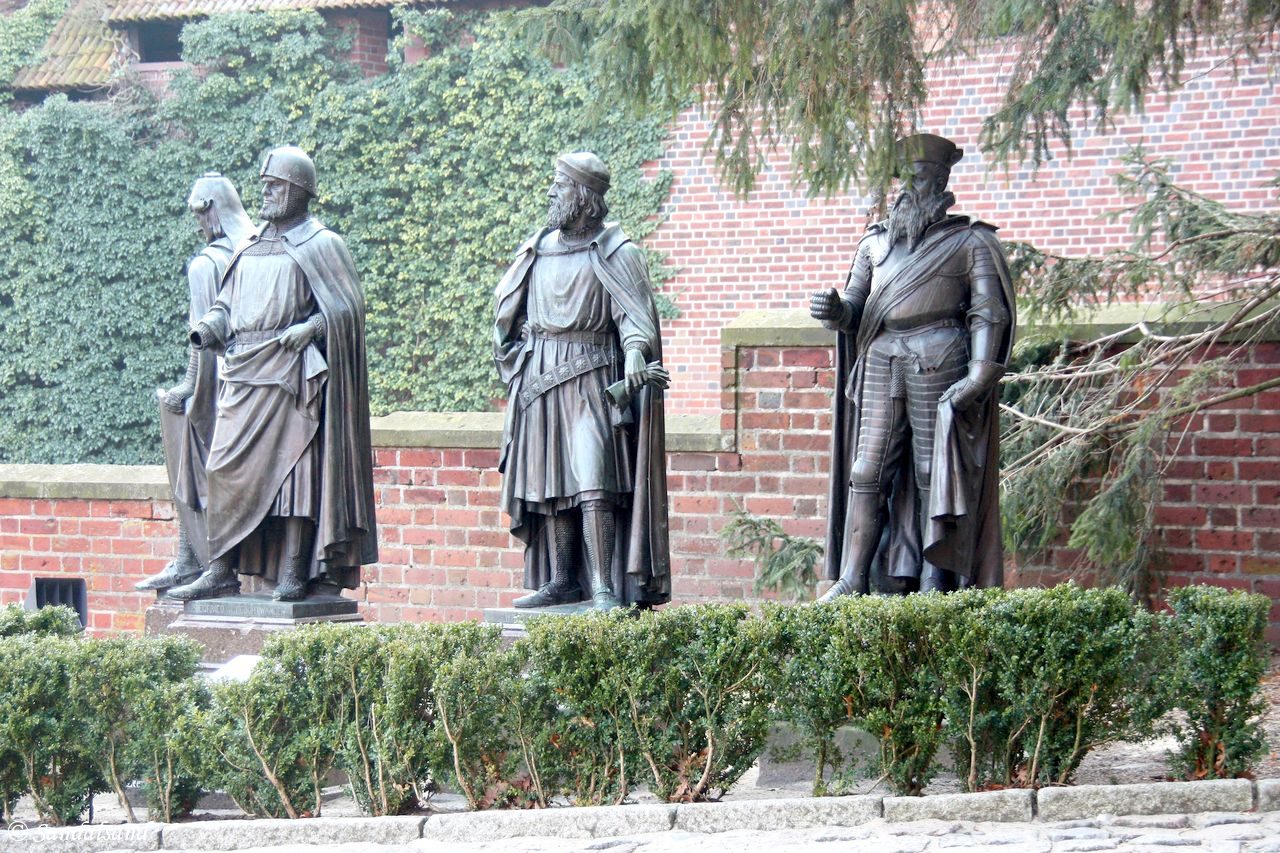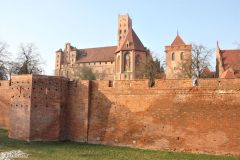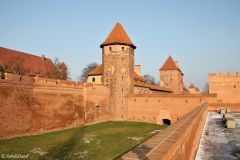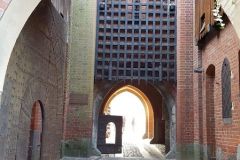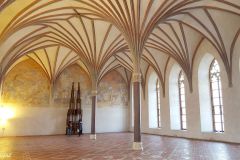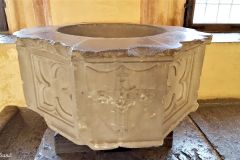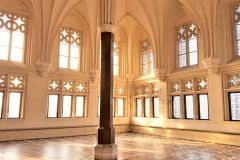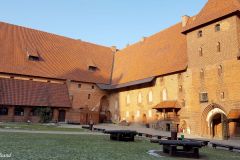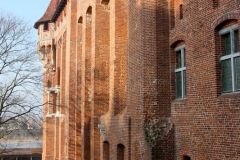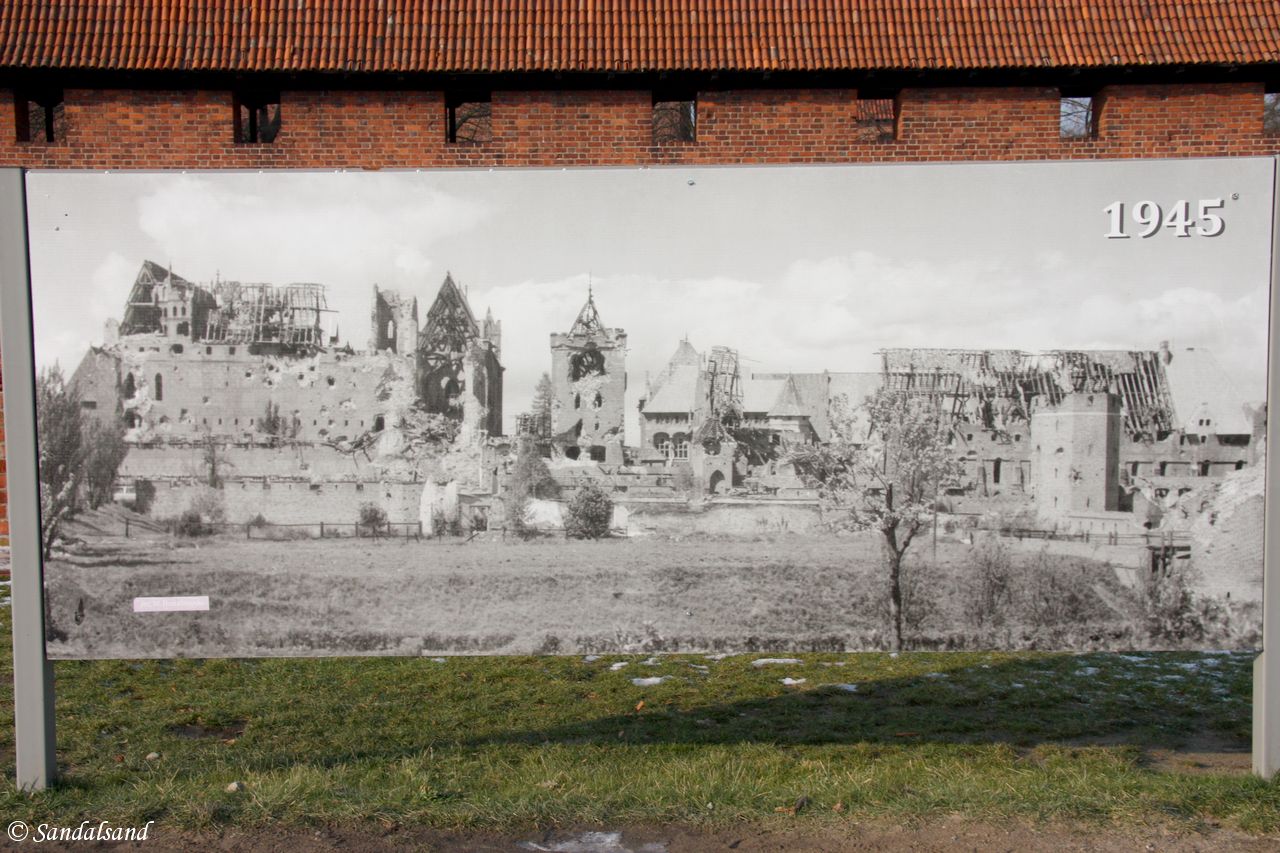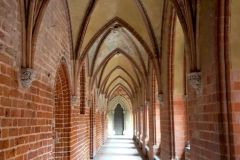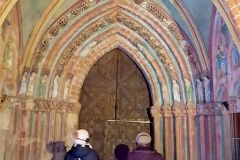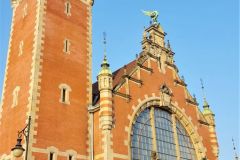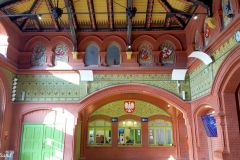The Castle Museum at Malbork is one of the greatest historical attractions in Poland and a UNESCO World Heritage Site. In 1309 it became the capital of one of the most powerful states on the Baltic, under the Grand Masters of the Teutonic Knights. The castle was expanded over the centuries into the largest in the world.
This article is structured in a chronological sequence giving you an overview of the castle’s more than 700 years of history. The miniature images (which can be expanded) are sorted in the sequence of my and everybody else’s visit – from the exterior to the innermost parts of the castle. There is practical information and more at the end.
The Teutonic Era
The Order of the Teutonic Knights of St. Mary’s Hospital in Jerusalem or more commonly known as the Teutonic Order was established in 1190 during the Third Crusade to the Holy Land. At first it worked as a brotherhood of monks in Acre (now in Israel) but transformed in 1198 into a knightly order like the Templars and the Order of St. John. Some years later Grand Master Hermann von Salza decided to move the Order to Europe, predicting defeat in the Holy Land. They set up their headquarters in Venice but later also received an invitation from Polish royals to assist in the defence against the pagan Prussians in the southern Baltic region.
The Teutonic Order was very successful (ruthless) in battling (and converting to Christianity) the Baltic peoples. All conquered lands along the coast went into their possession and many fortified monasteries and castles were built. In 1309 the Order occupied Gdansk (Danzig) and Pomerania setting the stage for centuries of feuds with Poland. By now the Teutonic monastic state had become so powerful in the Baltic region, that Grand Master Siegfried von Feuchtwangen decided to move their headquarters from Venice to their fortress of Marienburg. (Malbork is the Polish name, becoming the official name of the castle after WWII.) His decision was also a reflection of the Pope’s moving against the powerful knightly orders.
Marienburg
Marienburg thus became capital of one of the most powerful states on the southern coast of the Baltic. Naturally the former fortified monastery had to be expanded. A forty-year long building period produced the High Castle, surrounded by a deep moat, towers and several rings of defensive walls. At the centre they built the church of the Blessed Virgin Mary. There was also an old settlement outside which was reconstructed into the Middle Castle. Here the Palace of the Grand Masters was built as well.
A third section of the Marienburg was added later in the 14th and into the first half of the 15th century. This is called the Lower Castle or Outer Bailey and contained an armoury (Karwan), a grainery and several service buildings. This part too was fortified with towers, gatehouses and deep moats.
In the late 14th century Poland formed a union with Lithuania and beat the Teutonic knights at the Battle of Grunwald in 1410. In 1454 another war led to the break-up of the Teutonic territory and finally in 1457 the Order was defeated and the Marienburg castle taken over by the Polish king.
The Polish Era
Between 1457 and 1772 the castle saw comparatively few changes from the construction work carried out by the Teutonic Order. Some buildings and rooms changed functions but the overall impression was that the castle was not as important to the Poles as it had been for the Order. Consequently maintenance was skipped and the overall condition of it deteriorated over the years.
The Prussian Era
Next came the Prussians (not the same Prussians as were slayed by the crusading knights). Their legacy was in the first years everything but proud. The years after 1772 was a period of deliberate dismantling and destruction of the old castle. For instance the Grand Refectory was converted into an arena for equestrian drill, and vaulted ceilings were destroyed.
The Great Reconstruction
After two-three decades of destructive activities a wave of Romanticism swept over Marienburg. Headed by a small group of inspired individuals the Prussian public and King in Berlin finally put an end to all destruction.
A period of many reconstruction efforts began and continued for more than a hundred years. The aim was to restore the Castle to its former glory during the Teutonic Knights. Marienburg became a centre for the development of historic restoration methods accepted worldwide even today.
The Third Reich
The Marienburg Castle was situated inside the Danzig Free State, established as a result of WWI. From 1933 onward the flag of the Third Reich began to fly over the castle and it came into use for symbolic purposes.
During the fights at the end of WWII the advancing Soviet army destroyed around 60% of the castle in their attempt to defeat the defending German forces.
After the Second World War
In the years following WWII large efforts have been undertaken to restore the Malbork Castle once again. These activities are still ongoing. The castle is now a museum, a UNESCO World Heritage Site, and receives a large number of tourists every year.
Practical information
Getting there
It you are not driving you will most likely make your way to Malbork by train. The town is on the main line between Gdansk and Warsaw. From Gdansk there are numerous trains a day, taking between 30-50 minutes. It is very easy to buy tickets at the station, and they are cheap. I think I paid roughly 2 euros for a single return ticket.
The main train station in Gdansk is called Gdansk Glówny and the one in Malbork is called Dworzec Kolejowy w Malborku. There are huge signs stating Malbork on the station so you will know when to get off. The two train stations, Gdansk and Malbork, are also worth having closer looks at while you are waiting. From the main station in Malbork there is a 15 minute walk due west.
If you are on a local train you might want to get off one stop before the central station in Malbork. The Malbork Kaldowo makes for a slightly shorter walk to the castle. In addition it gives you the opportunity to take postcard panorama pictures from across the river.
The old town of Malbork was almost completely destroyed at the end of WWII and it was never rebuilt with replicas like in Gdansk and Warsaw. Instead the authorities decided to demolish the rest and from the late 1940s a completely new town was built. This explains the lack of charm you will most likely experience on your walk between the train station and the castle.
The map
The map below indicates where you can find the museum and also the railway stations. Notice that the sprawling gargantuan mass of red brick that constitutes the castle is occupying 20 hectares. This is what makes it the world’s largest castle and if you like, you can walk around it.
Eat, drink and stay
There are places to eat in town and at the railway station but there is also a restaurant and another one inside the fortress. If you want to stay the night in town, have a look at was is offered.
More information
Check out the museum’s website for much more information. There you will also find opening hours and ticket prices. The admission prices vary but you will not be paying more than the equivalent of 10 euros for a single adult ticket including an audioguide. Make sure you bring one with you from the ticket office, they come in very handy and will add a lot to your understanding of what you see. I have read there might be too few audioguides available during the high season.
Advice
You should allow three hours inside the castle. Then if you add two-three hours in transportation time and lunch you will end up with a full day tour.
The chapters in this series
This is the last article from my weekend visit to Gdansk. The following have been published from it.
(3) A walk in Gdansk, part 2, plus Westerplatte
(4) Malbork Castle on a day trip from Gdansk (THIS)
The Malbork castle is also presented in these two posts:
World Heritage #0847 – Castle of the Teutonic Order in Malbork
VIDEO – Poland – The Malbork Castle
There are articles on the Sandalsand website from other parts of Poland. Check them out too.

